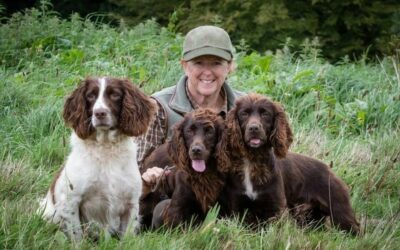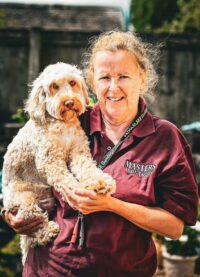Last Updated: 29th March 2023

Sue Nicholls from Paddlelake Gun Dogs in a naturally talented trainer with a true passion for every dog that crosses her path from those she has bred to those that come to her for rehoming. We are incredibly proud to have Paddlelake as part of the Masters Team.
Sue was introduced to pheasant shooting from a very early age and was over the moon when she got her first gundog at the age of 10. That ignited her passion for training from then and the rest as they say is history!
Over the years Sue has gained so much from her dogs, including a lot of experience in breeding, training and nutrition and this is where Paddlelake was born.

At Paddlelake we thrive in knowing we give our dogs and pups the best start in life and valuable training for their futures. We breed and train our own dogs as well as supporting owners with training their dogs. Our goal has always been to breed quality dogs and we are incredibly proud to say that many of our pups have gone on to join Devon and Cornwall police and the British Army.
As well as our breeding and training work, over the past 5 years we have begun to deal with rehoming. We have so far rehomed 178 dogs and it is such a joy see each dog settling with its new owners. We have rehomed to pet homes as well as working homes and have even had one start a career with the police and the prison service. I love what we do here a Paddlelake.
With all of the training we do, I am often asked what is the most important factor when you start training a young dog and for me it is twofold.
Firstly, quality nutrition, knowing that the pup is getting quality food providing everything it needs to grow, develop and thrive is key. I know all of our dogs are getting exactly what they need from their Masters Dog Foods.
Secondly is making it fun. For me training starts at around 8 weeks. This starts at meal times using my training whistle as a cue for a good solid sit, followed by a wait until release command to start their meal.
One of the most important things for me is that my pups don’t pull when on the lead. This again begins at around 8 weeks and can be easily done in a garden space. Place slip lead over the pup and just let them get use to the feel of it.
When that is complete then take the lead in your left hand show the pup where you expect it to be and then say heel. Repeat this until the pup is proactively doing this themselves. After a few days of this I then place the lead over the back of the pup so the pup thinks it’s still attached, gradually over the next few weeks I remove the lead completely and boom pup is walking to heel. The key is simple repetition.
I look forward to writing my next piece for the Masters Knowledge Hub and if there are any training issues you are facing get in touch and I will see if I can help in my next article.